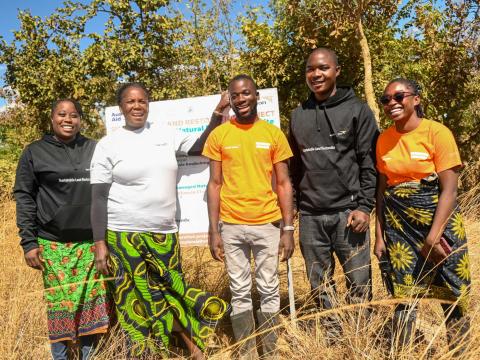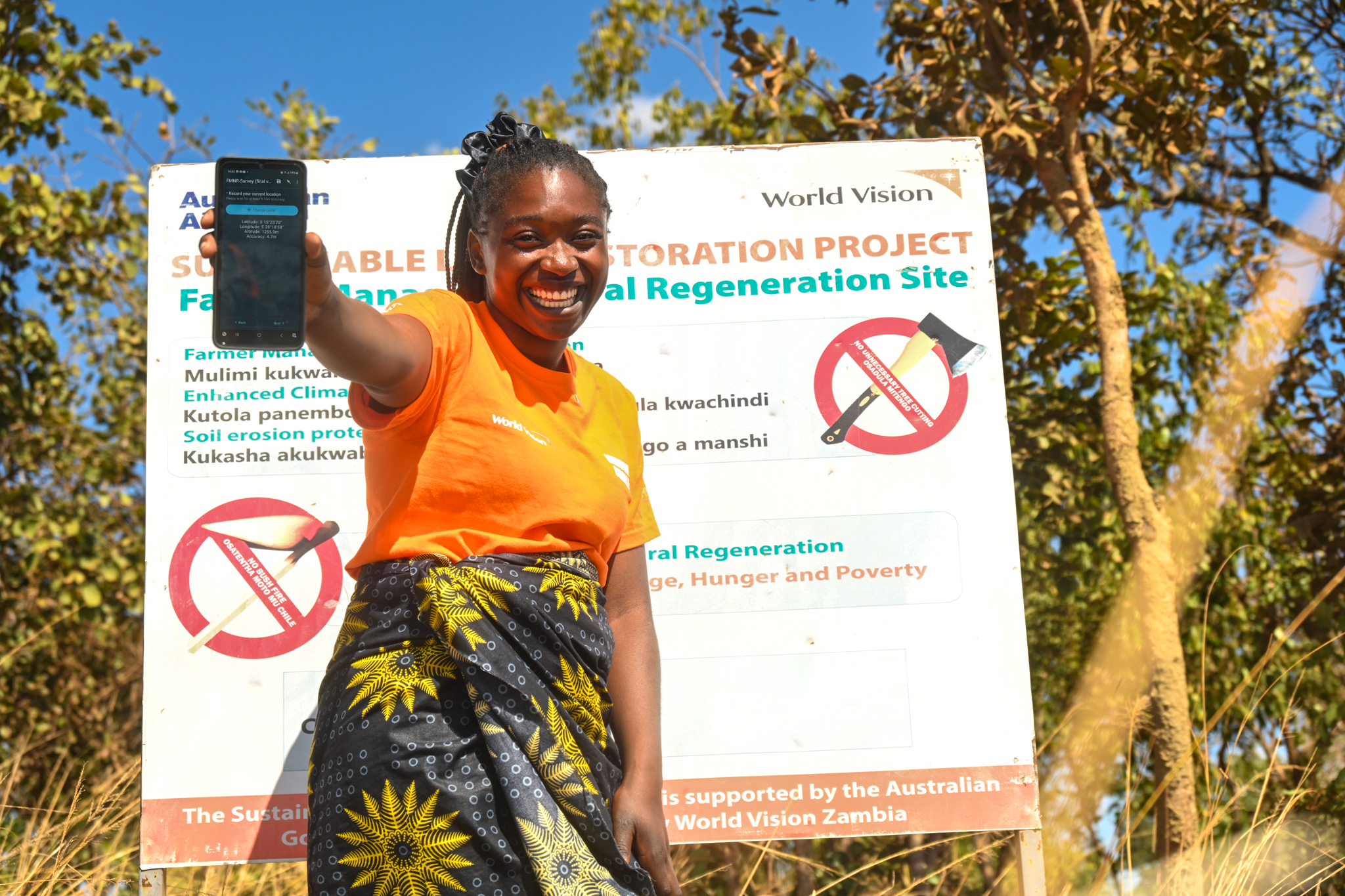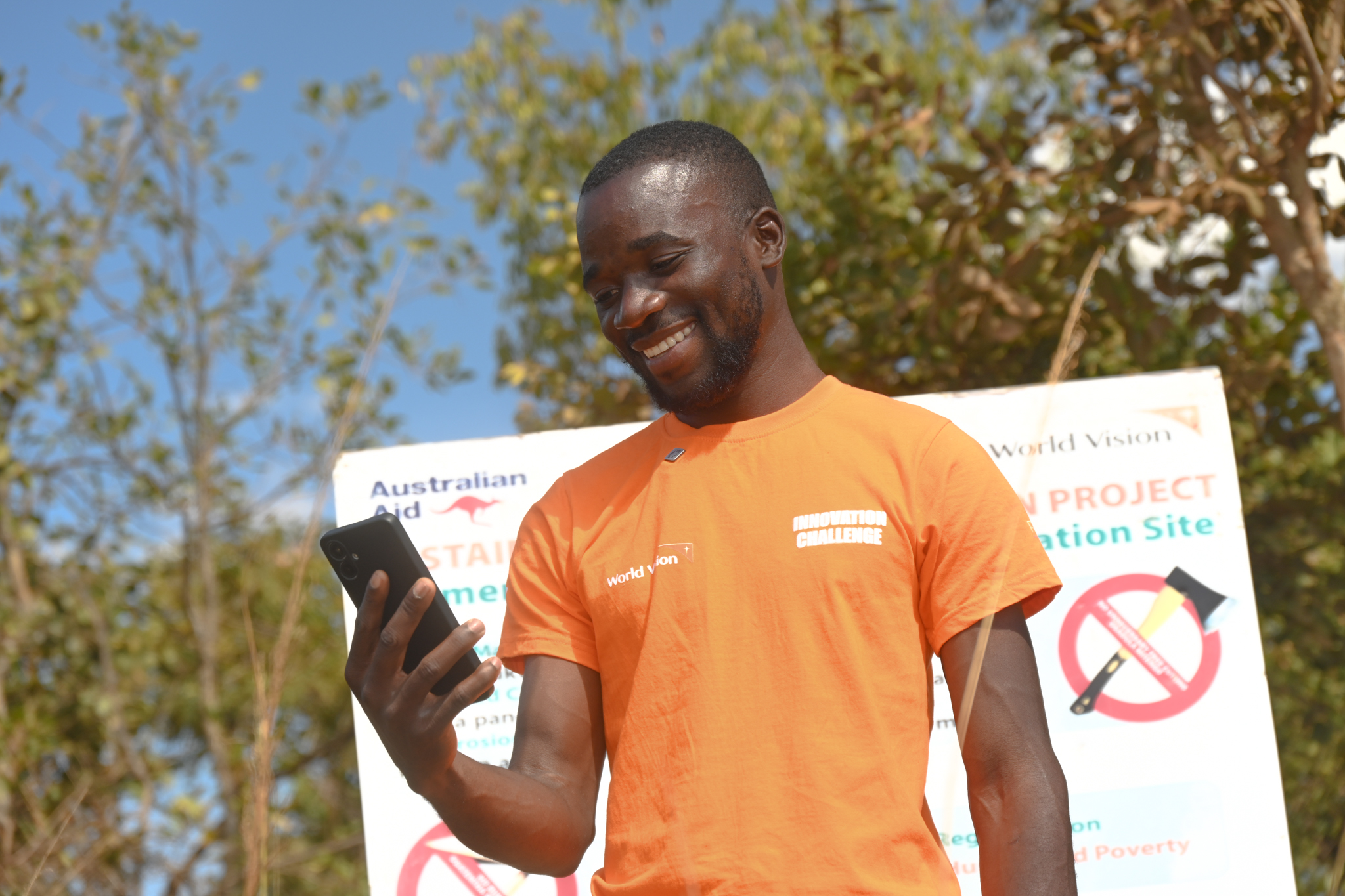Zambian Youth Harness Technology to Combat Deforestation and Climate Change

By Christabel Mundike, Communications, Zambia
Environmental degradation in Zambia, primarily caused by charcoal production, unsustainable farming practices, and limited access to real-time data, continues to accelerate deforestation and heighten climate-related risks. In response, World Vision Zambia, in collaboration with Rinato Space, has launched the Youth-Led Forest Change Monitoring Technology Project. This innovative initiative empowers local youth to utilise advanced tools for data collection and forest surveillance.
The project is part of the larger Sustainable Land Restoration (SLaR) Program, which aims to restore approximately 150,000 hectares of communal and individual farmland by 2027. Achieved through Farmer Managed Natural Regeneration (FMNR), a cost-effective, sustainable land rejuvenation strategy, the initiative helps communities recover degraded land while boosting livelihoods.

As part of the rollout, young people from Chibombo, Katete, and Sinda Districts have been trained to operate mobile survey tools for mapping forest sites, collecting geographic coordinates, and monitoring ecological changes.
“During the orientation, we learned how to use the survey tool. It’s very user-friendly; I didn’t face any challenges. The questions are simple to understand and explain to the community. Plus, it works without internet,” shared Venon Mulenga, a youth champion from Chibombo.
Beyond technical skills, the project nurtures environmental awareness and leadership among youth.
“From the training until now, I’ve learned a lot about conserving nature and tackling climate issues. As a young person, I’m also sharing this knowledge with my peers because we are the future leaders,” Venon added, highlighting the importance of youth involvement in building a resilient future.
“This youth-led initiative is equipping us with the skills to monitor all the forests we’ve mapped using technology. I can now launch surveys and conduct activities more efficiently,” he explained.

“Activities like these will help us create a better future, one with fewer climate-related problems,” he concluded.
The mapping process extends beyond data collection; it involves engaging community members, raising awareness about FMNR best practices, and encouraging local participation.
“We’re not just mapping,” said Gloria Benkele, a youth champion from Chibombo. “While visiting sites, we also educate community members about FMNR. It’s a two-way process, collecting data and empowering people.” She says.
“The technology helps us capture precise coordinates and assess the actual size of the sites. This enables us to monitor progress over time, especially in adopting FMNR methods,” Gloria explained.
At its core, the Youth-Led Forest Change Monitoring Technology Project exemplifies how youth leadership combined with digital innovation can address environmental challenges. By equipping the next generation with the necessary tools, knowledge, and sense of responsibility, the initiative is laying a solid foundation for community-driven restoration and sustainable land management across Zambia.
“Youth have the power to shape the future. The responsibility is in our hands,” Venon affirmed.